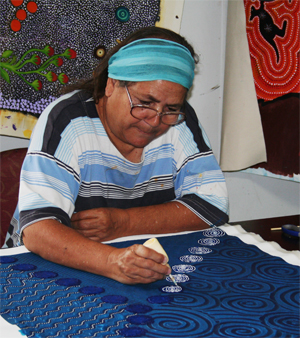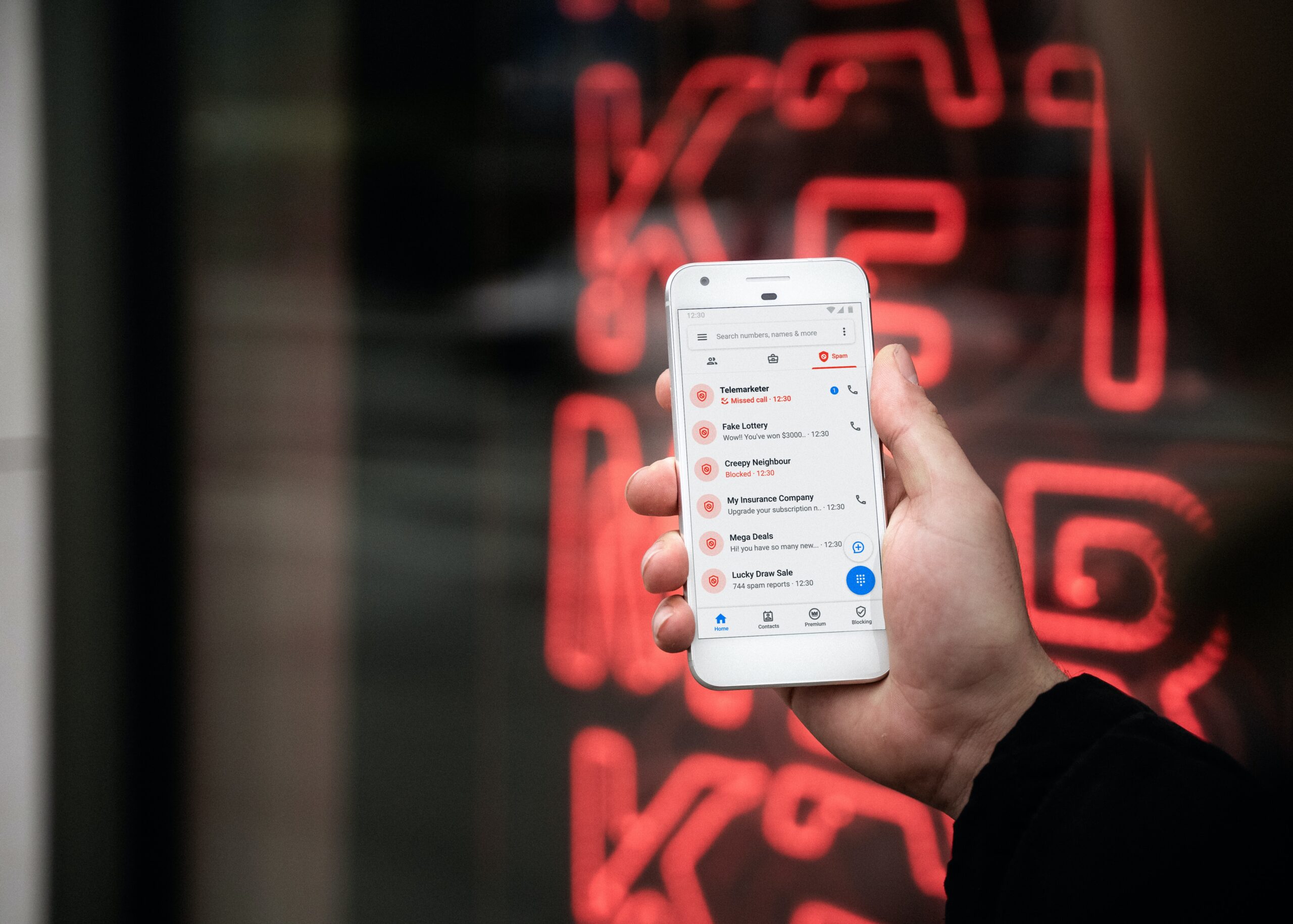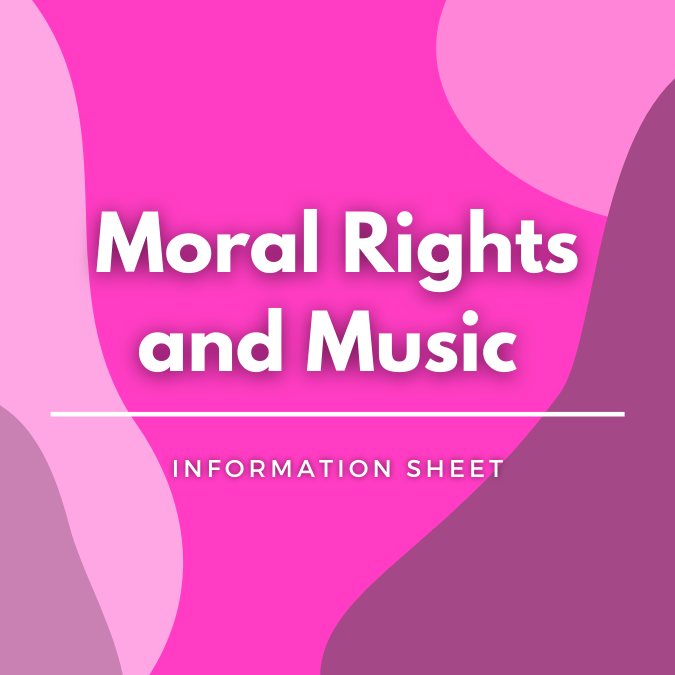Media Arts
Media art is the use of many different art forms in one work (film, photography, sound, light etc). This fact sheet provides information on the nature of copyright in media art, issues for using Indigenous arts in media art and Indigenous protocols.
What is media art?
Media art combines a number of existing art forms to produce a “hybrid” or cross-disciplinary work. It is often collaborative and uses new or existing art forms and more recent technologies, including digitisation and the electronic transmission of work.
Who owns copyright in media art work?
Copyright ownership of media art works is determined by three considerations. The first is whether there is copyright in works used by media artists. For example, a media artist might use existing photographs, film, sound recording, paintings, text and other works. Any copyright in these works will need to be ascertained and permission granted to use them before they can be reproduced or adapted. In addition, the moral rights of the creators of the existing works need to be observed.
The second aspect determining copyright ownership in media art works arises from the nature of any collaboration. If a number of people have contributed their skills and labour to the project, they may be joint-owners of the physical work and of the copyright in the work.
The third aspect determining copyright ownership in media art works arises from the nature of the media used to create the new work. For example, if media art work is a montage of film footage, text from a poem, with an existing sound recording as a sound track, the media art work would comprise a number of different copyrights. If the media artist created all the components of the work as original works as a self employed artist, the media ratist would be the copyright owner in all the components. If not, copyright ownership of each component will need to be considered separately and permission sought from each copyright owner for the proposed use. In addition, there will be copyright in the media art work itself if the grouping of the components brings about an original creation.
What can the copyright owner do?
Subject to the exceptions in the Copyright Act, the copyright owner in a new work will be able to exercise the exclusive rights in each type of copyright represented. For instance, if the new work is an installation including film with a sound track and paintings, and assuming the artist is the copyright owner of the film, sound track and painting, the artist will be able to exercise the exclusive rights to:
- reproduce the artistic work (the painting) in material form;
- publish the artistic work (the painting);
- communicate the artistic work (the painting) to the public;
- make a copy of the sound recording;
- cause the sound recording to be heard in public;
- communicate the sound recording to the public;
- enter into a commercial arrangement;
- make a copy of the film;
- cause the film to be heard in public;
- communicate the film to the public.
When do I need to get permission from the copyright owner?
Generally, permission is needed whenever you want to use a substantial part of the media art work to exercise any of the exclusive rights of the copyright owner.
Some issues for Indigenous media artists
When artists use existing works, such as an archival photograph, permission should be sought from the Indigenous people who are depicted in the photograph or their descendants, if they can be located. This is to reduce the possibility of causing offence by incorporating the material. If the person or people have passed away, family members may not want the photograph used. In other cases, family may be happy to have a photo returned to them and may be happy to have the image used in a new artistic work. The most important thing is to consult and request permission before using images or any other form of cultural material so that there is opportunity to address any cultural issues. There are some excellent examples in Media Arts, Protocols for Producing Indigenous Australian Media Arts, a guide produced by the Aboriginal and Torres Strait Islander Arts Board of the Australia Council for the Arts.
Archival material may also be subject to copyright, and the rights to use the material must be cleared before it can be lawfully used. For example, if archival photographs are still protected by copyright, the permission of the archival institution and the photographer are needed before using them.
There are often a number of types of media, including media from the internet, involved in media art. As a result, it is important to get approval from a person performing or contributing copyright material to a media art work as to how their work will be used and how the media art work will be presented. Some people do not want their work on the internet at all, some fear that their work may be more easily misappropriated if it is accessible on the world wide web. People need to be fully informed about proposed uses; technological protection measures may be appropriate to avoid unauthorised copying of their work.
As media art is often collaborative, it is always important to give credit to all people who contribute their artistic skills and cultural knowledge, from both a cultural and moral rights compliance perspective.
Resources
Arts Law Centre of Australia
- Best Practice Guidelines: Displaying Visual Art on the Internet – The Guidelines codify best practice for reproduction and communication of Visual Art via digital distribution methods.
The Australia Council for the Arts
Disclaimer
The information in this information sheet is general. It does not constitute, and should be not relied on as, legal advice. The Arts Law Centre of Australia (Arts Law) recommends seeking advice from a qualified lawyer on the legal issues affecting you before acting on any legal matter.
While Arts Law tries to ensure that the content of this information sheet is accurate, adequate or complete, it does not represent or warrant its accuracy, adequacy or completeness. Arts Law is not responsible for any loss suffered as a result of or in relation to the use of this information sheet. To the extent permitted by law, Arts Law excludes any liability, including any liability for negligence, for any loss, including indirect or consequential damages arising from or in relation to the use of this information sheet.
© Arts Law Centre of Australia
You may photocopy this information sheet for a non-profit purpose, provided you copy all of it, and you do not alter it in any way. Check you have the most recent version by contacting us on (02) 9356 2566 or tollfree outside Sydney on 1800 221 457.
The Arts Law Centre of Australia has been assisted by the Commonwealth Government through the Australia Council, its arts funding and advisory body.




